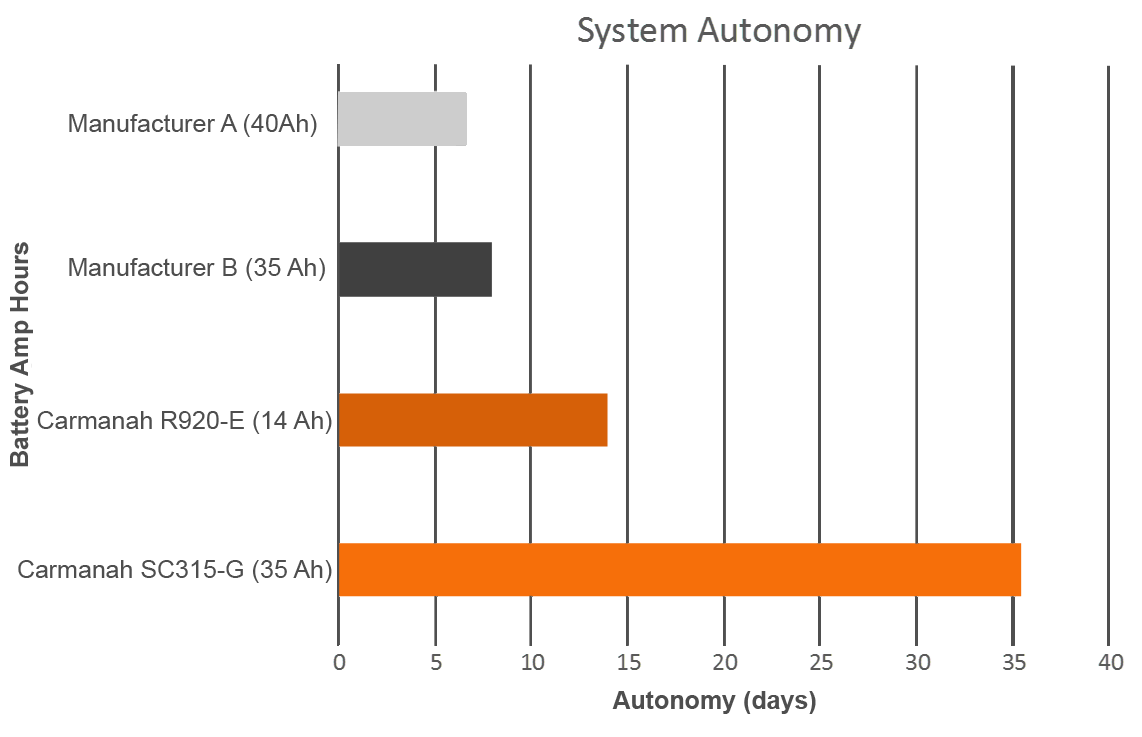FINDING SOLUTIONS WITH APPROPRIATE SYSTEM AUTONOMY
ARTICLE 3 of 4 | This is the third article in a series of four on understanding solar power. Missed the others? Click here to start from the beginning.
System autonomy is an important factor to consider when specifying a solar-powered beacon. System autonomy is defined as the number of days a beacon can continue to operate if all solar charging (sunlight) is completely removed. Industry best practice is to refer to the autonomy value of a specific location (published by NASA) and ensure the system’s autonomy meets or exceeds the guideline for that location. Let’s use a rectangular rapid flashing beacon (RRFB) system as an example since it has the most variables to consider.
Calculating system autonomy
To determine system autonomy of an RRFB, battery capacity is divided by total system load (energy out*, per 24-hour period). This value is then compared to NASA’s location-specific autonomy guideline.
*Energy out is largely composed of system activations by pedestrians. Read more about energy in and energy out.
OVERVIEW: Learn how solar beacons work.
In some project specifications, a particular autonomy value may be stated. However, these values are often irrelevant as they lack consideration of the factors that influence autonomy. In detailed calculations, the geographical location is combined with actual system usage, temperature effects, and all system loads and efficiencies to obtain an accurate value. For an RRFB, total system load (energy out) must include the number of activations and the flash duration in the calculation; otherwise, the autonomy value will be meaningless.
Specifications that require a minimum of 30 days autonomy are excessive. Once specific usage data is considered and compared to published autonomy guidelines, actual autonomy values will be significantly lower than 30 days. Although each location varies, NASA-recommended autonomy values for North America are typically between 5 and 10 days.
The chart below shows the system autonomy and battery capacity of several RRFB manufacturers. Manufacturer B and Carmanah’s SC315-G product both have a battery capacity of 35 amp-hours. However, the system autonomy values vary considerably due to differences in system efficiencies. This illustrates that larger battery capacity does not always result in greater system autonomy.
Note: These comparisons do not factor in age or temperature de-rating. Based on this, Carmanah’s published autonomy ratings are slightly lower.

Requirements that state a certain battery size or system autonomy, without consideration of the operating performance, are not a reliable way to specify RRFBs or other solar-powered beacon systems. It is important to ensure autonomy values consider all factors including location, pedestrian usage, and system efficiencies. We can provide a custom look at the autonomy value for your site-specific installation.
A requirement for a given system autonomy value, without consideration of all the factors that influence autonomy, is not a reliable way to specify any solar-powered flashing beacon system. To ensure a flashing beacon balances both performance and cost, one of the most important factors to identify is location, since the amount of shading affects the amount of power the sun can generate. NEXT ARTICLE: Read more about shading now.